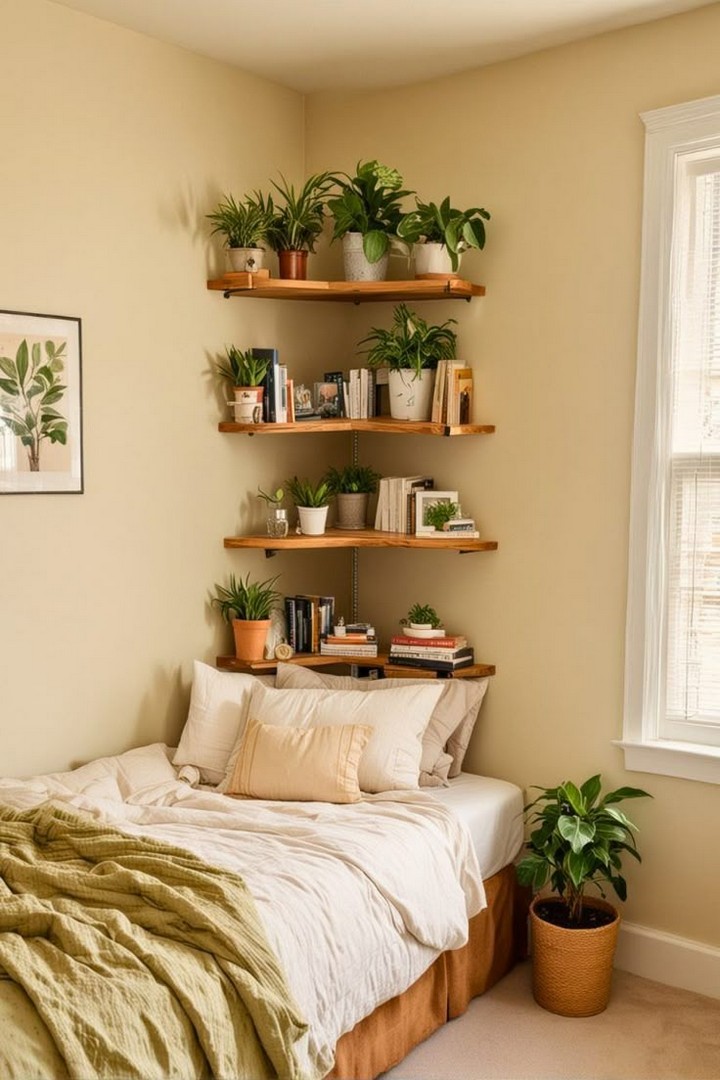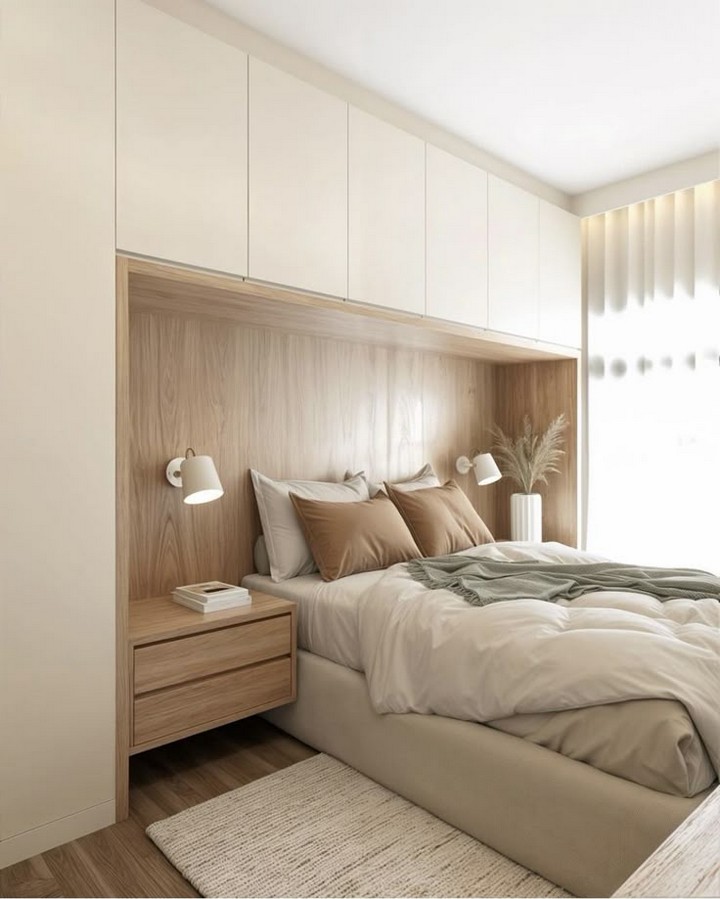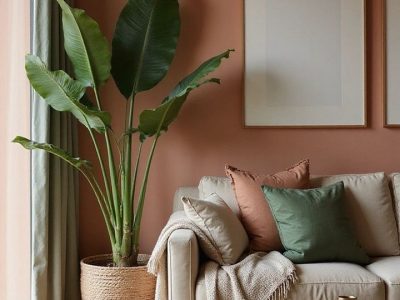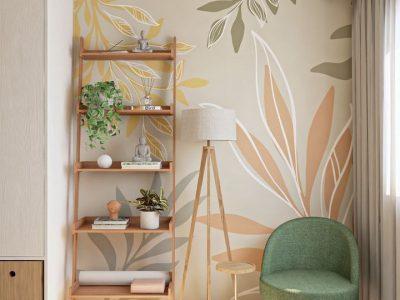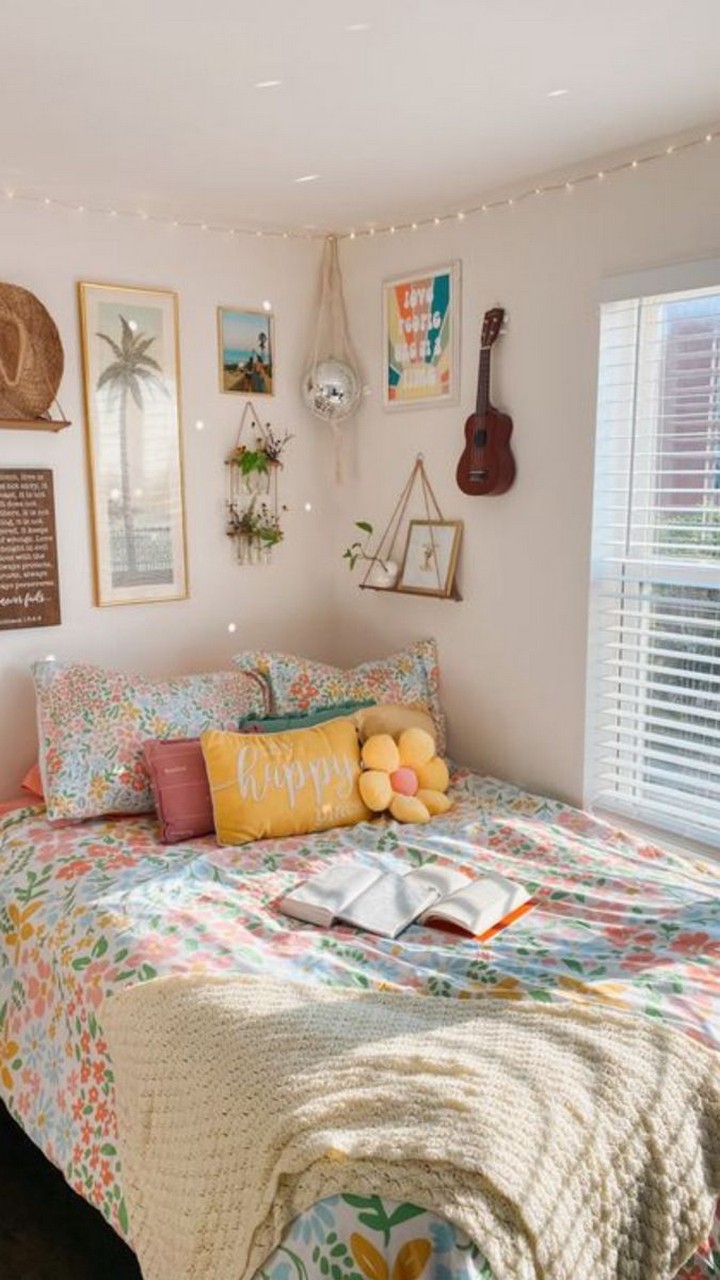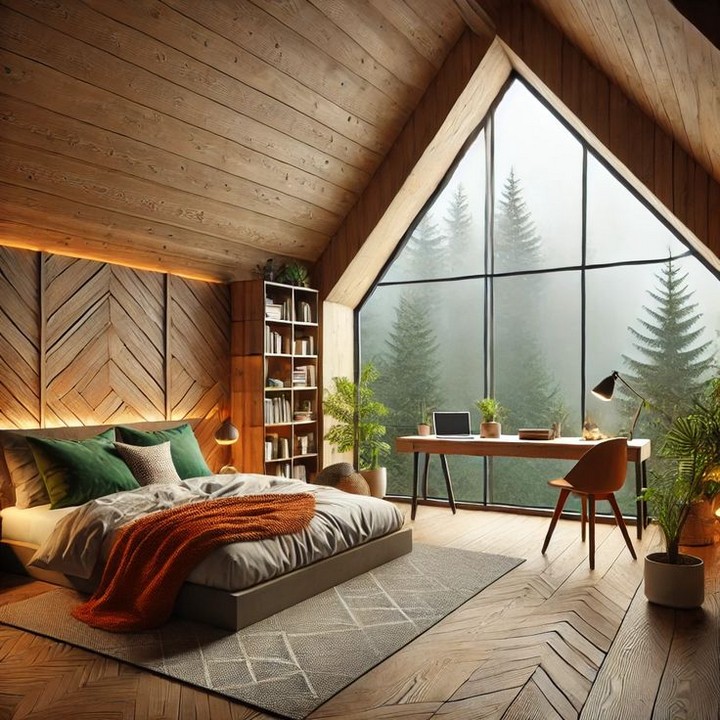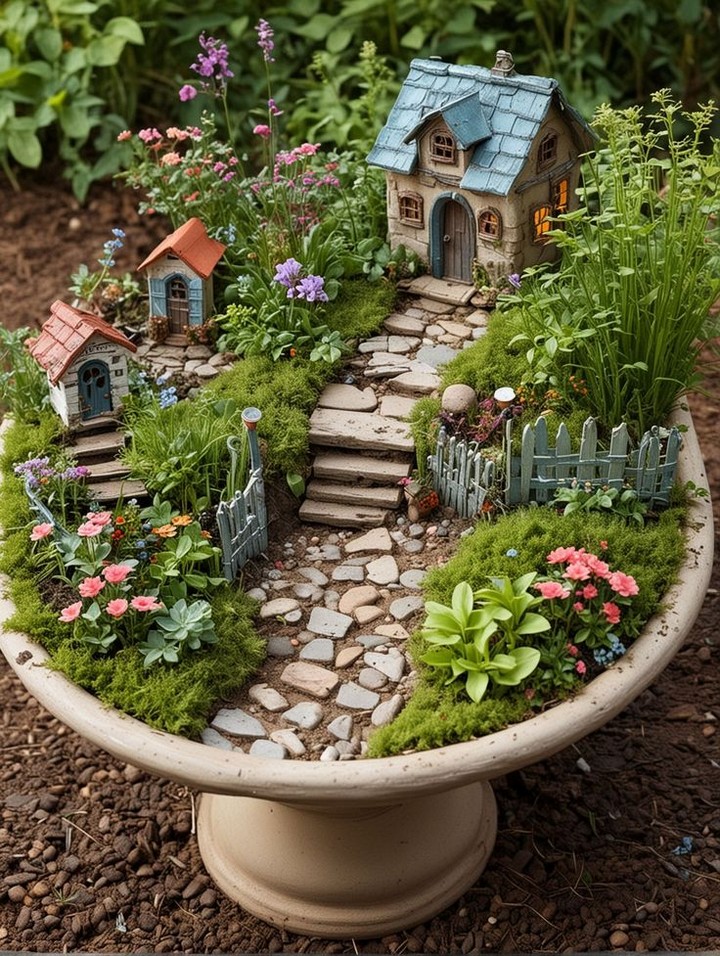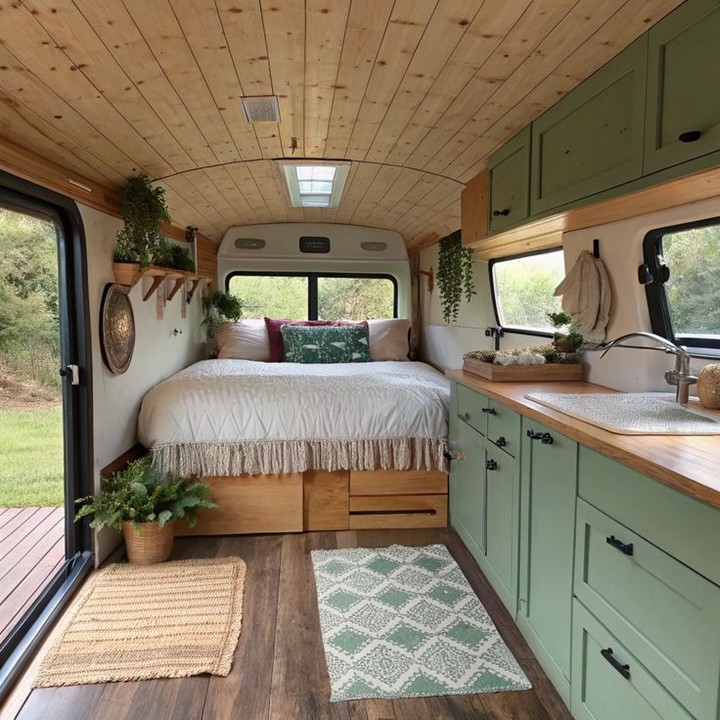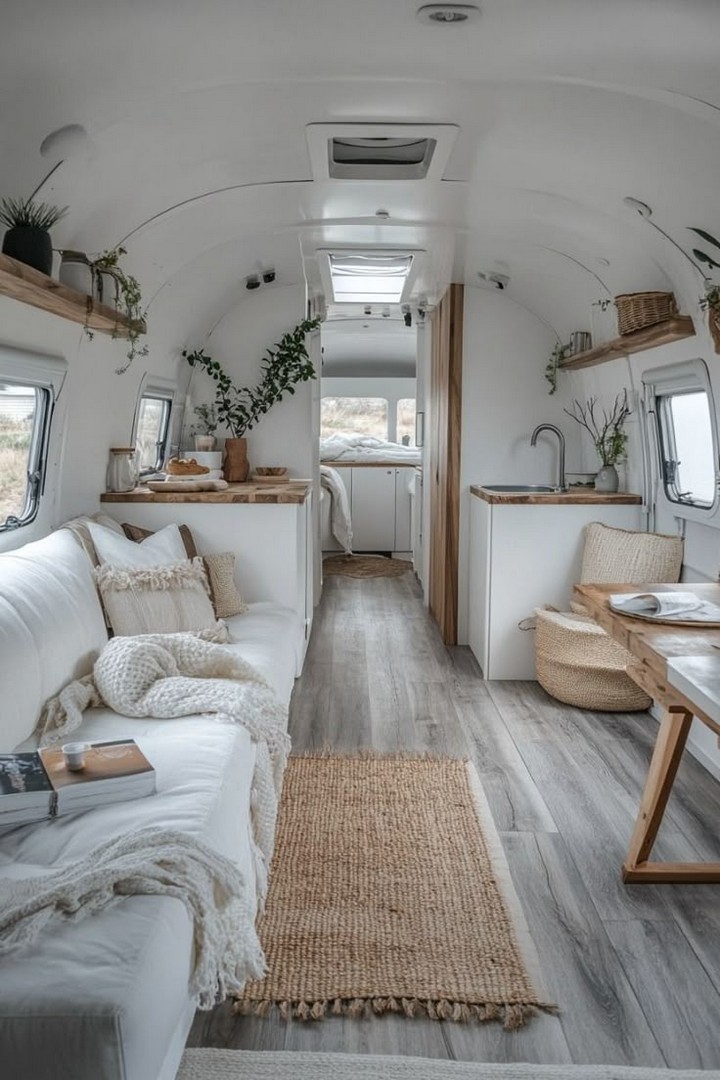In our increasingly compact living environments, the Scandinavian minimalist approach offers not just aesthetic appeal, but practical solutions for small bedroom spaces. Originating from Nordic countries where long, dark winters necessitated bright, airy interiors, this design philosophy combines functionality, simplicity, and connection to nature making it perfectly suited for smaller bedrooms where every square foot matters.
This comprehensive guide explores 25 thoughtful Scandinavian minimalist bedroom ideas specifically tailored for small spaces. From color schemes and furniture selection to lighting and organization, these concepts will help you transform your compact bedroom into a serene, functional sanctuary that feels surprisingly spacious.
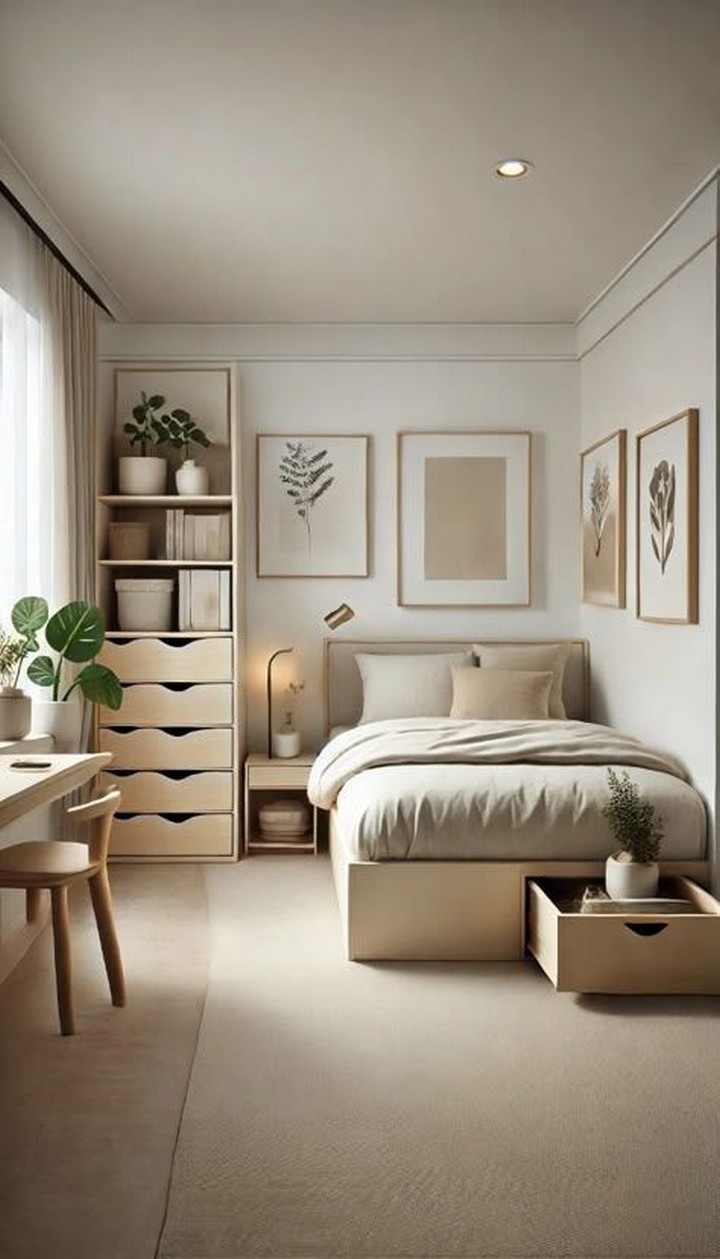
Before diving into specific design ideas, it’s important to understand the core principles that define Scandinavian minimalism:
- Functionality First: Every item serves a purpose
- “Lagom”: The Swedish concept of “not too much, not too little”
- Natural Materials: Wood, cotton, wool, and other organic elements
- Light Maximization: Creating bright spaces regardless of room size
- Hygge: The Danish approach to coziness and contentment
When applied to small bedroom design, these principles create spaces that feel both open and intimate—perfect for rest and rejuvenation.
Color Palette Foundations
1. Embrace White as Your Primary Canvas
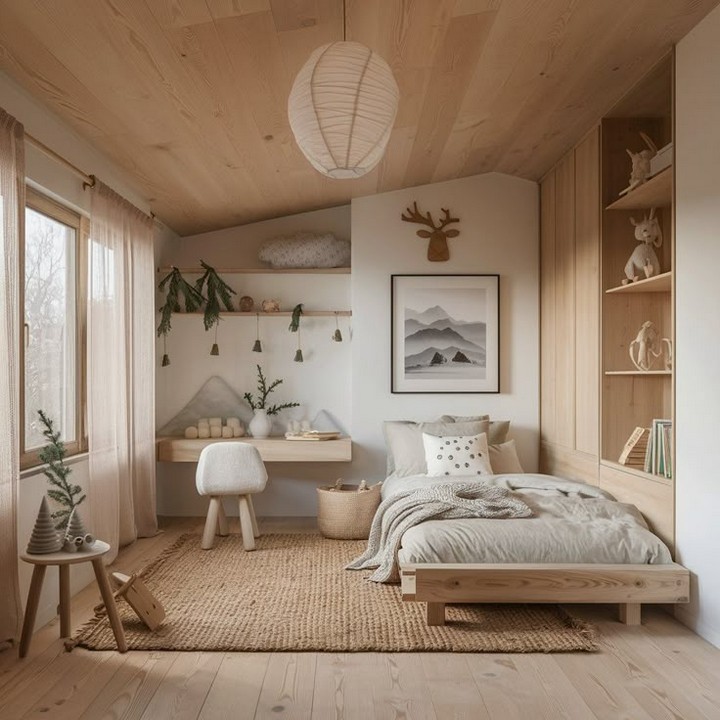
White walls remain the quintessential starting point for Scandinavian design, especially in small spaces:
- Opt for warm whites (with subtle yellow or pink undertones) rather than stark, clinical whites
- Consider matte finishes which create a softer, more forgiving appearance
- Extend the white to ceilings to enhance height perception
- Use white as a unifying element across various surfaces (walls, trim, doors)
This approach creates an expansive backdrop that visually pushes walls outward, making your bedroom appear larger while reflecting available light.
2. Incorporate Muted Secondary Colors
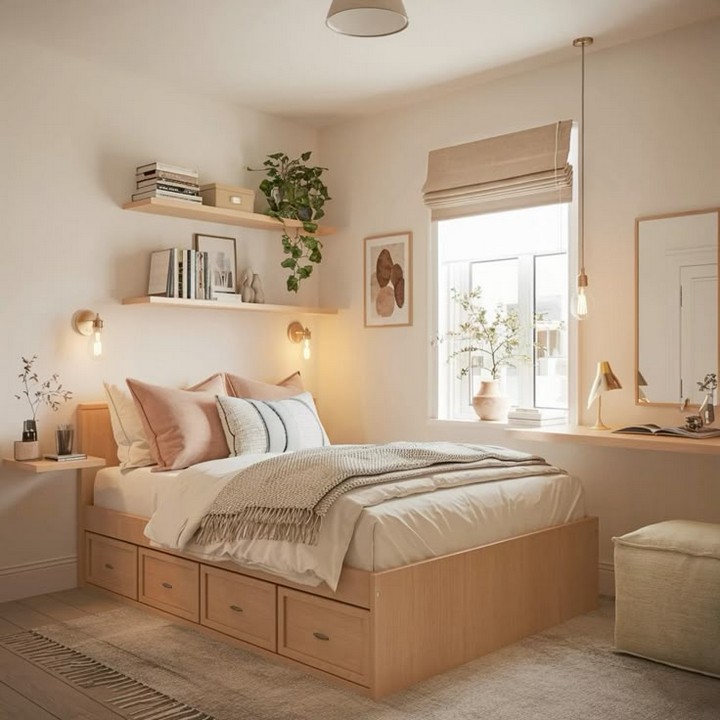
While white dominates Scandinavian palettes, subtle color adds dimension without overwhelming small spaces:
- Soft grays and taupes add warmth without darkening the room
- Pale blues and greens introduce a connection to nature
- Blush pinks or gentle terracotta tones provide warmth
- Charcoal accents create contrast without heaviness
Limit your secondary colors to 1-2 options to maintain the clean, uncluttered aesthetic essential for small spaces.
3. Create Monochromatic Depth
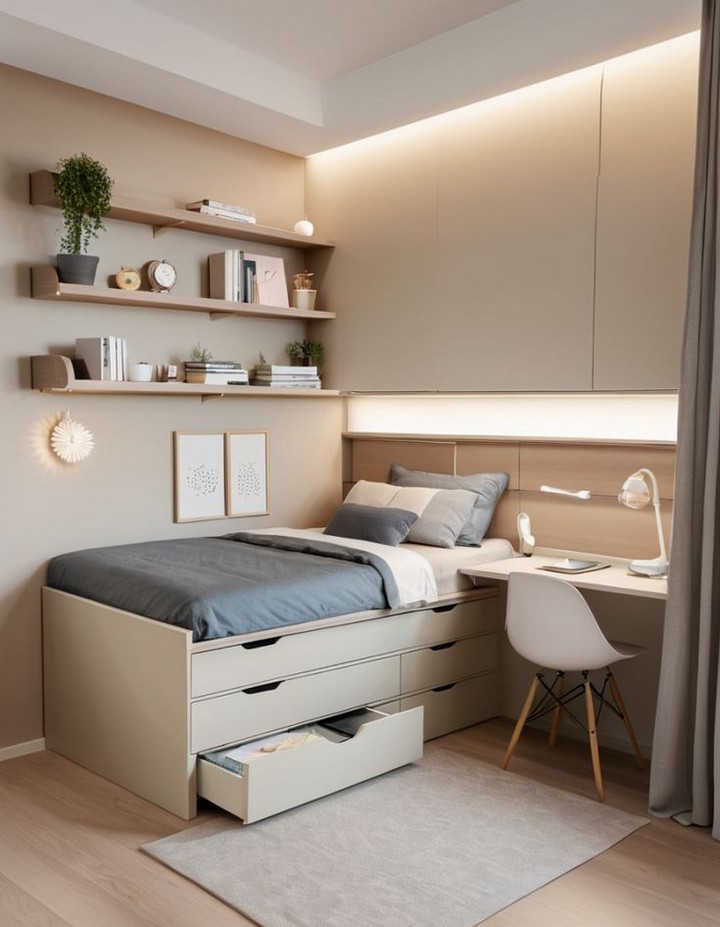
Working within a single color family creates cohesion while adding visual interest:
- Layer different shades of the same color through bedding, rugs, and accessories
- Use textural variations to create distinction within your monochromatic scheme
- Incorporate subtle pattern variations within your chosen color
- Consider tonal shifts from lighter to slightly darker versions
This approach creates depth without introducing the visual complexity that can make small spaces feel chaotic.
Furniture Selection and Placement
4. Choose Low-Profile Bed Frames
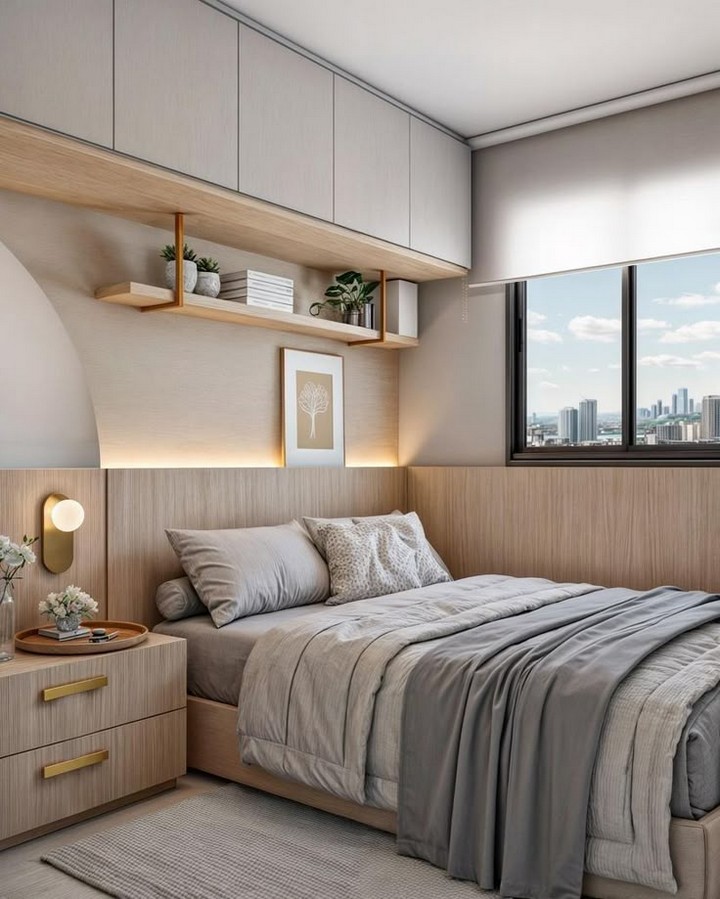
The bed occupies the largest footprint in your bedroom—choose wisely:
- Platform beds with minimal or no headboards maximize vertical space
- Consider natural wood frames in light finishes like birch, pine, or ash
- Look for integrated storage drawers for linens and off-season clothing
- Floor-level beds without frames create an especially spacious feel
A low bed position creates more air between the top of the bed and the ceiling, enhancing the sense of height in the room.
5. Embrace Multifunctional Furniture
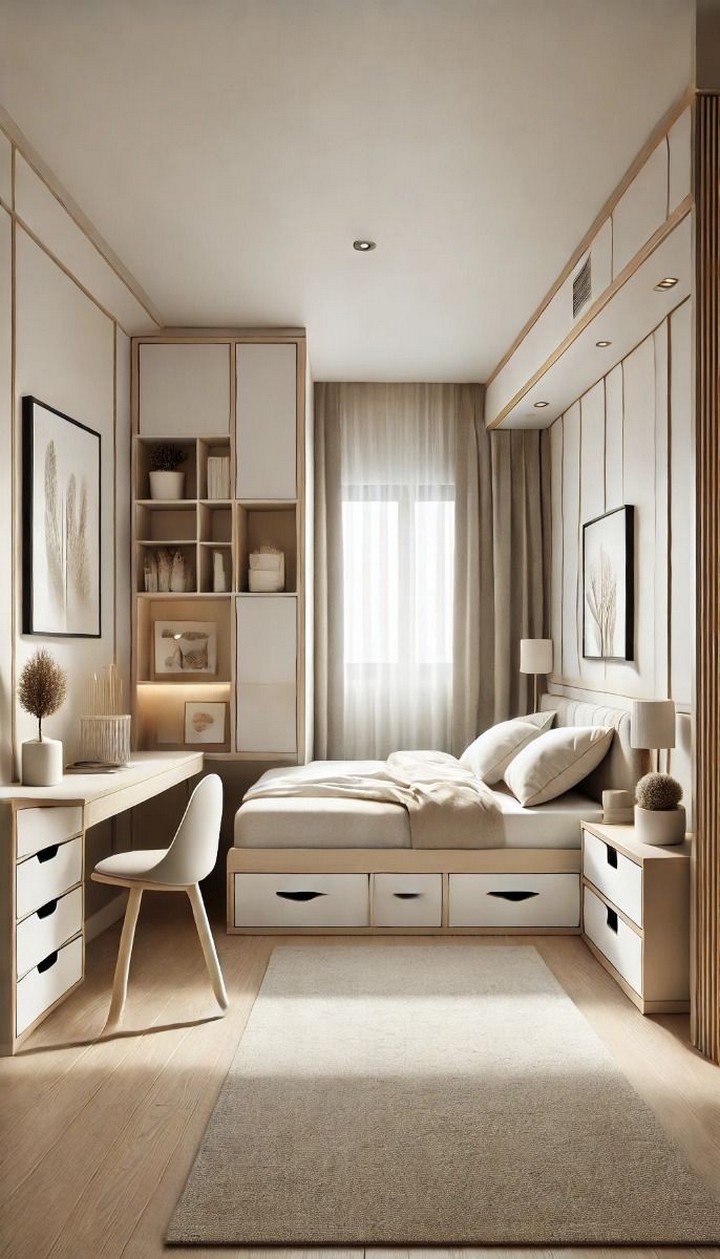
In small bedrooms, each furniture piece should serve multiple purposes:
- Select nightstands with drawers or shelving
- Consider a bench at the foot of the bed that provides both seating and storage
- Look for desks that can double as vanities
- Explore wall-mounted options that free up floor space
This multifunctionality aligns perfectly with the Scandinavian emphasis on practicality and utility.
6. Scale Furniture Appropriately
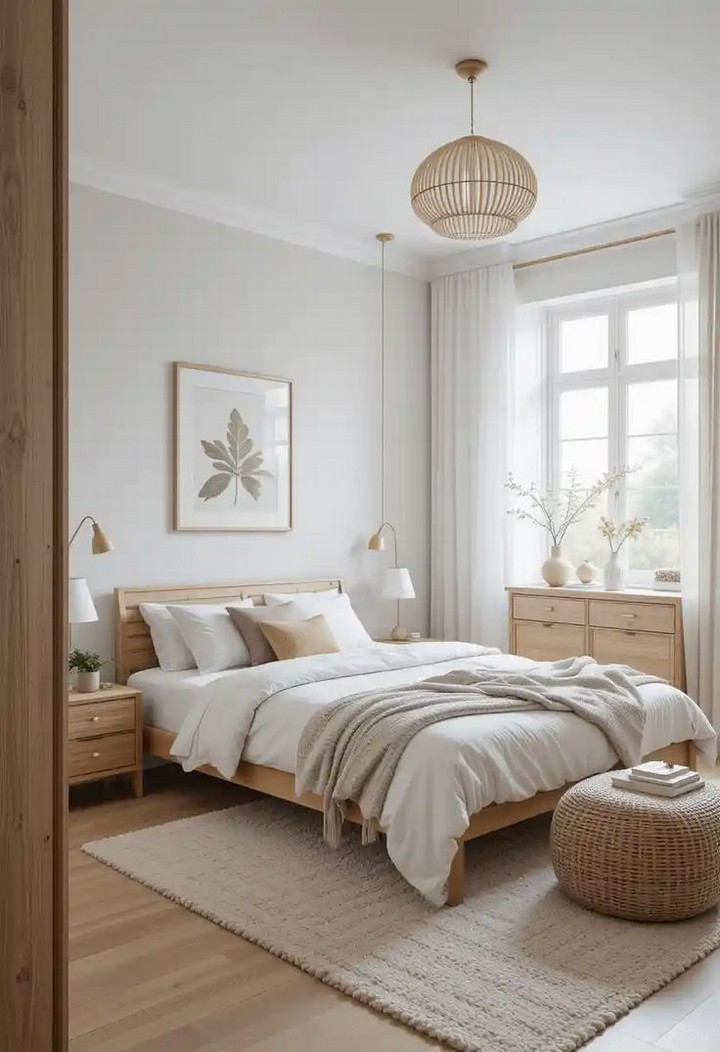
Proper scaling is crucial in small Scandinavian bedrooms:
- Choose slender profiles for all furniture pieces
- Select chairs and stools with open backs
- Consider visual weight—pieces with legs create a lighter appearance than solid-to-floor options
- Avoid oversized statement pieces that dominate the space
Appropriately scaled furniture maintains proper circulation paths through your bedroom, enhancing both functionality and perceived spaciousness.
7. Implement Wall-Mounted Solutions
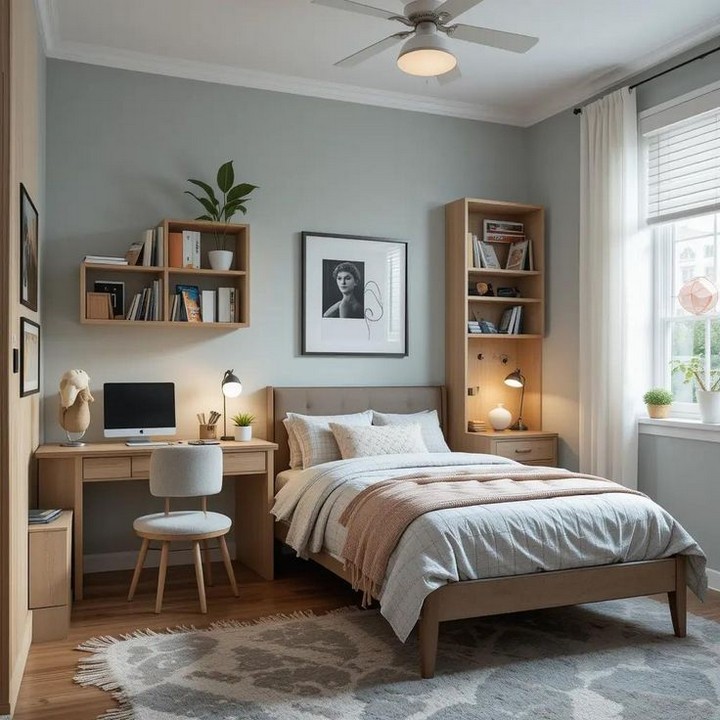
Free up valuable floor space with wall-mounted alternatives:
- Install floating bedside shelves instead of traditional nightstands
- Consider wall-mounted reading lamps to eliminate table lamps
- Use wall-hung clothing racks for frequently worn items
- Explore fold-down desks that disappear when not in use
These solutions maintain functionality while creating more open floor area—a key factor in making small rooms feel larger.
Strategic Storage Solutions
8. Utilize Under-Bed Storage Effectively
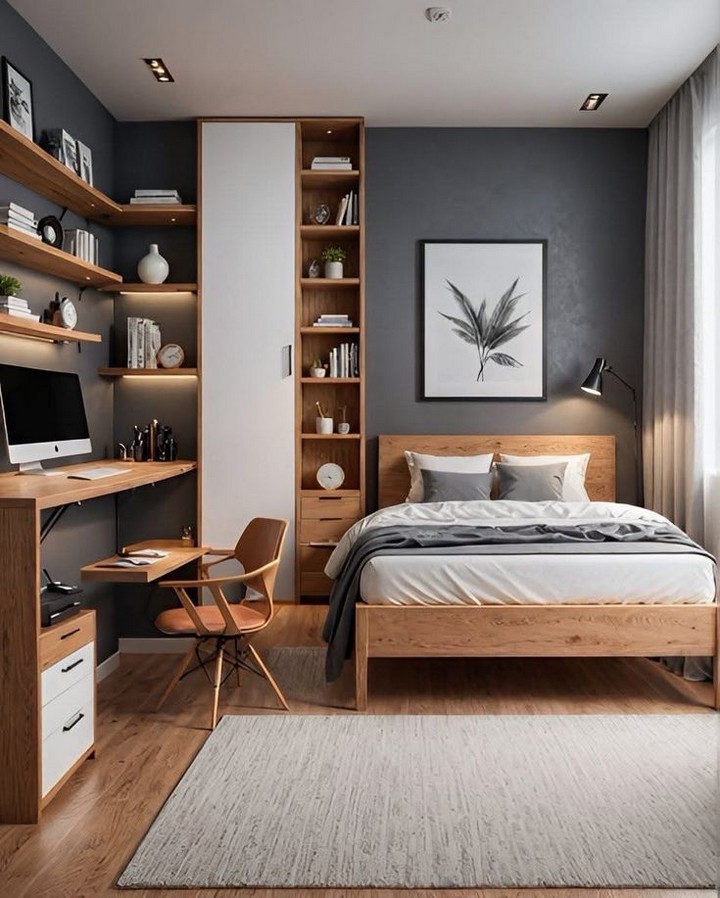
The space beneath your bed represents valuable square footage:
- Choose purpose-built storage bins in natural materials like canvas or rattan
- Consider hydraulic lift beds that provide access to the entire under-bed area
- Use slender rolling drawers for ease of access
- Organize under-bed storage by season or frequency of use
This often-overlooked space can store significant amounts of clothing, bedding, or personal items without impacting your room’s visual footprint.
9. Incorporate Open Shelving Strategically
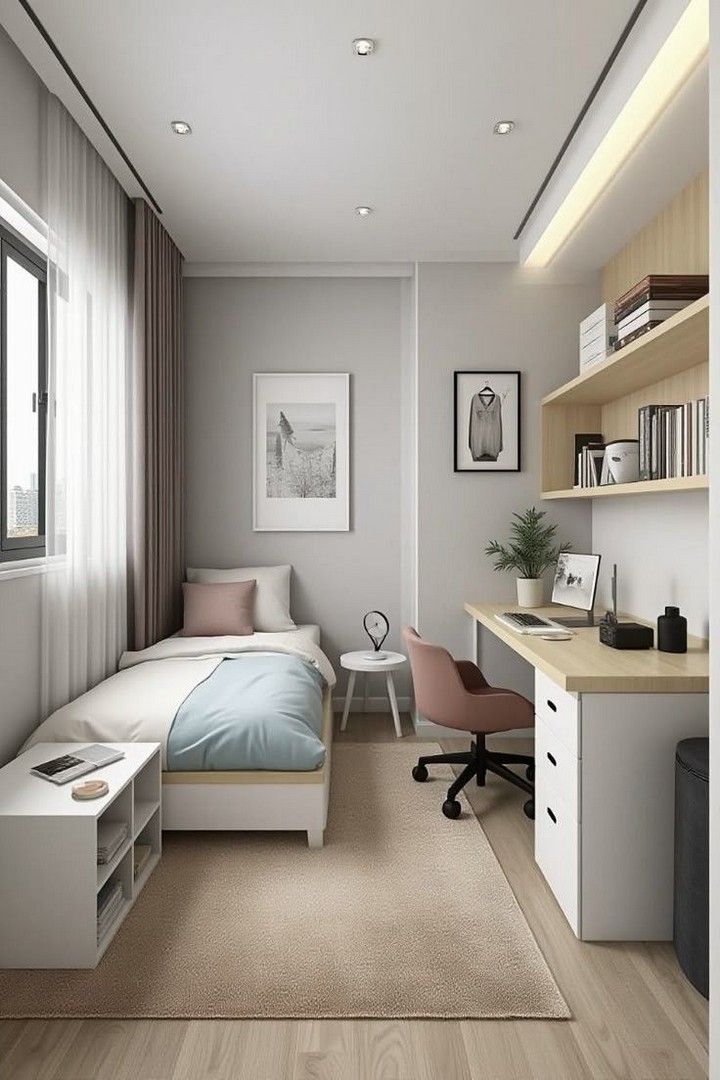
Open shelving embodies Scandinavian transparency while providing storage:
- Install floating shelves in unexpected spaces (corners, above doors, around windows)
- Keep styling minimal with intentional negative space
- Group similar items together for visual cohesion
- Maintain a consistent color palette for items displayed
The key to successful open shelving is curation—display only what enhances your space both functionally and aesthetically.
10. Explore Built-In Possibilities
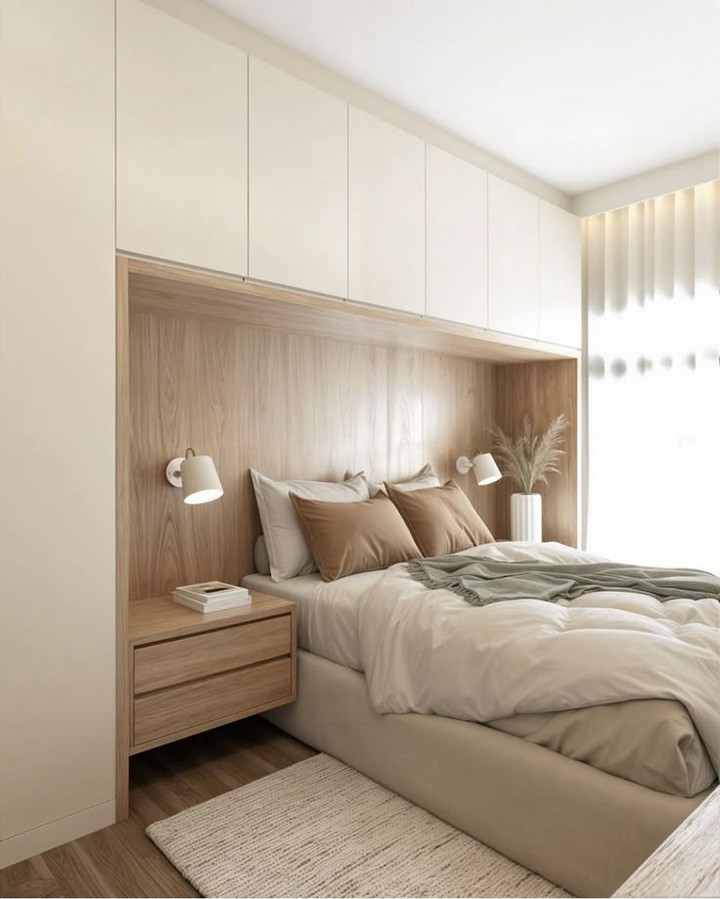
Custom or semi-custom built-ins maximize storage efficiency:
- Consider floor-to-ceiling cabinets in shallow depths
- Explore headboard walls with integrated storage
- Utilize awkward corners with custom solutions
- Investigate closet systems that maximize every inch
Well-designed built-ins can store more in less space while maintaining the clean lines essential to Scandinavian design.
11. Implement Closed Storage for Visual Calm
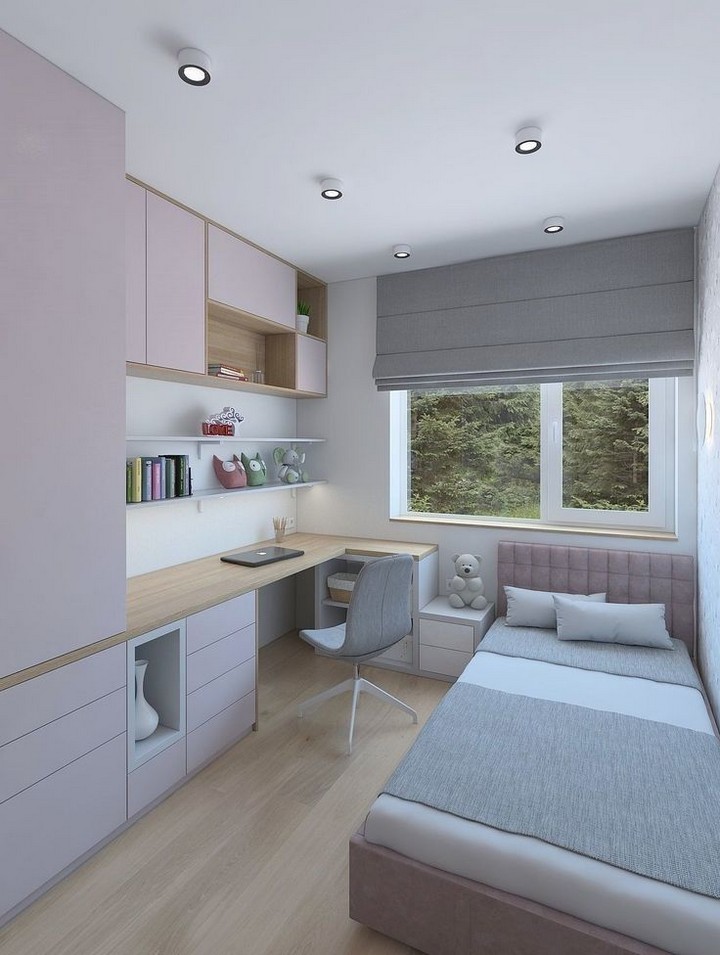
While open shelving has its place, concealed storage remains essential:
- Choose dressers with clean lines and minimal hardware
- Consider furniture with sliding doors to eliminate swing space
- Look for natural wood finishes or white lacquer for visual lightness
- Implement baskets and boxes within larger storage pieces for organization
Closed storage helps maintain the clutter-free environment that defines Scandinavian minimalism.
Lighting Philosophy
12. Maximize Natural Light
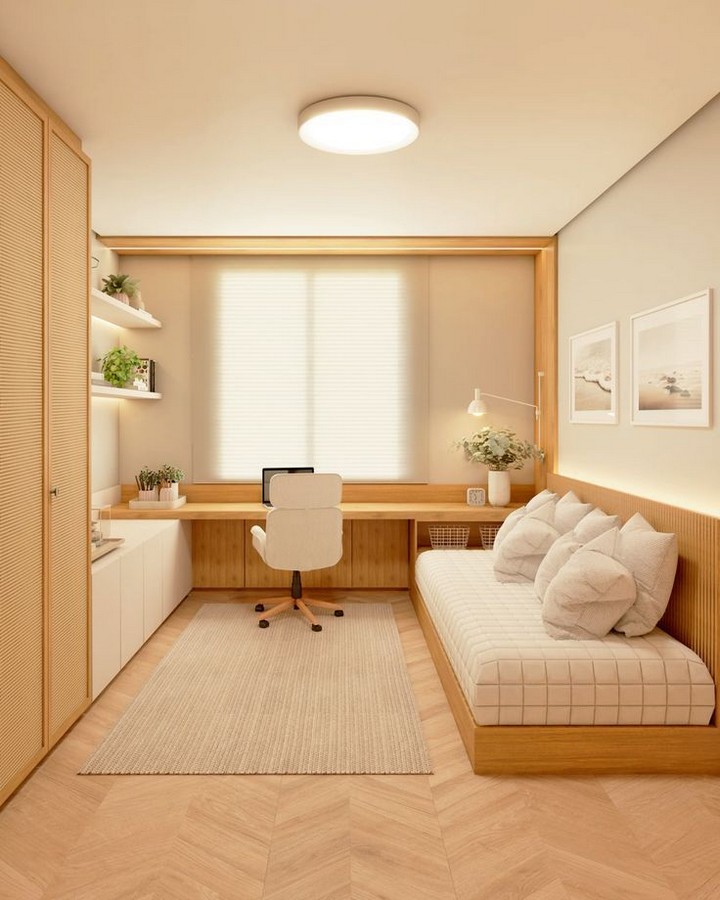
Natural light is the cornerstone of Scandinavian design:
- Keep window treatments minimal and translucent
- Position mirrors strategically to reflect outdoor light
- Choose glass or translucent room dividers when needed
- Consider interior transom windows for rooms with limited exterior walls
Every decision that enhances natural light flow will dramatically improve your small bedroom’s ambiance.
13. Layer Artificial Lighting Thoughtfully

Beyond natural light, create a layered lighting scheme:
- Install adjustable wall sconces for reading
- Consider pendant lights instead of table lamps to free up surface space
- Use LED strip lighting in recessed areas for ambient glow
- Choose fixtures with clean lines in natural materials or white finishes
Proper lighting transforms your bedroom from merely functional to genuinely inviting—crucial in small spaces that need to feel expansive and welcoming.
14. Incorporate Reflective Surfaces
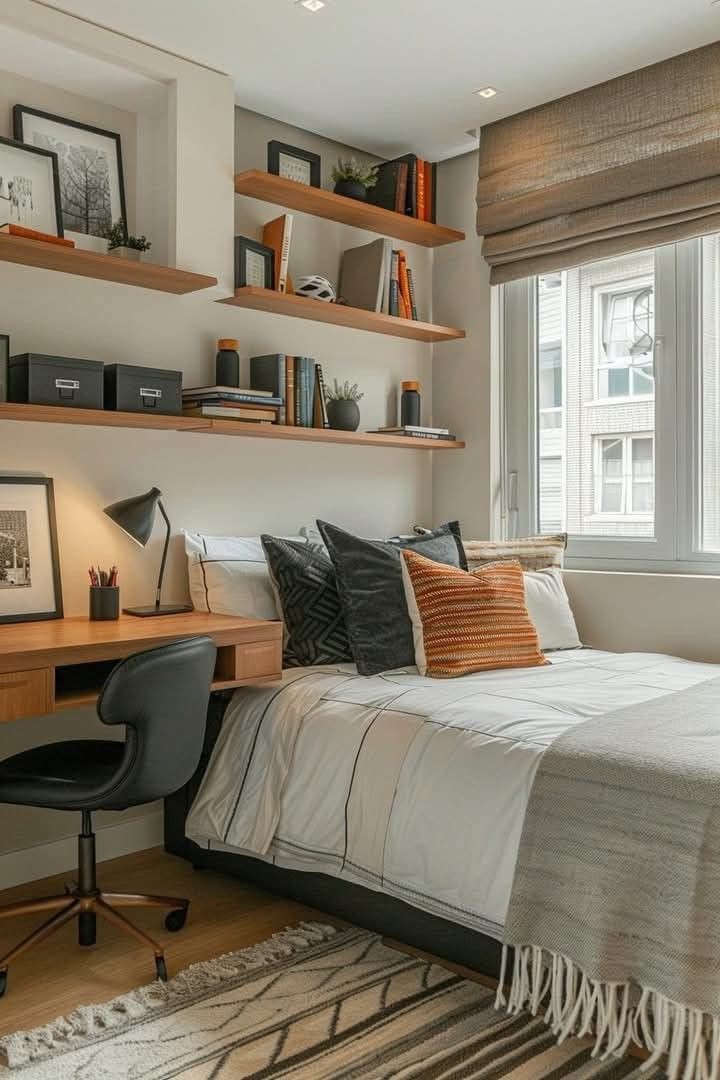
Strategically placed reflective elements amplify available light:
- Choose furniture with subtle glass or polished elements
- Consider a strategically placed mirror opposite your window
- Select light fixtures with reflective interiors
- Explore glossy ceramic accessories that bounce light
These reflective touches significantly impact brightness without requiring additional square footage.
Textile Selection
15. Choose Natural Fibers
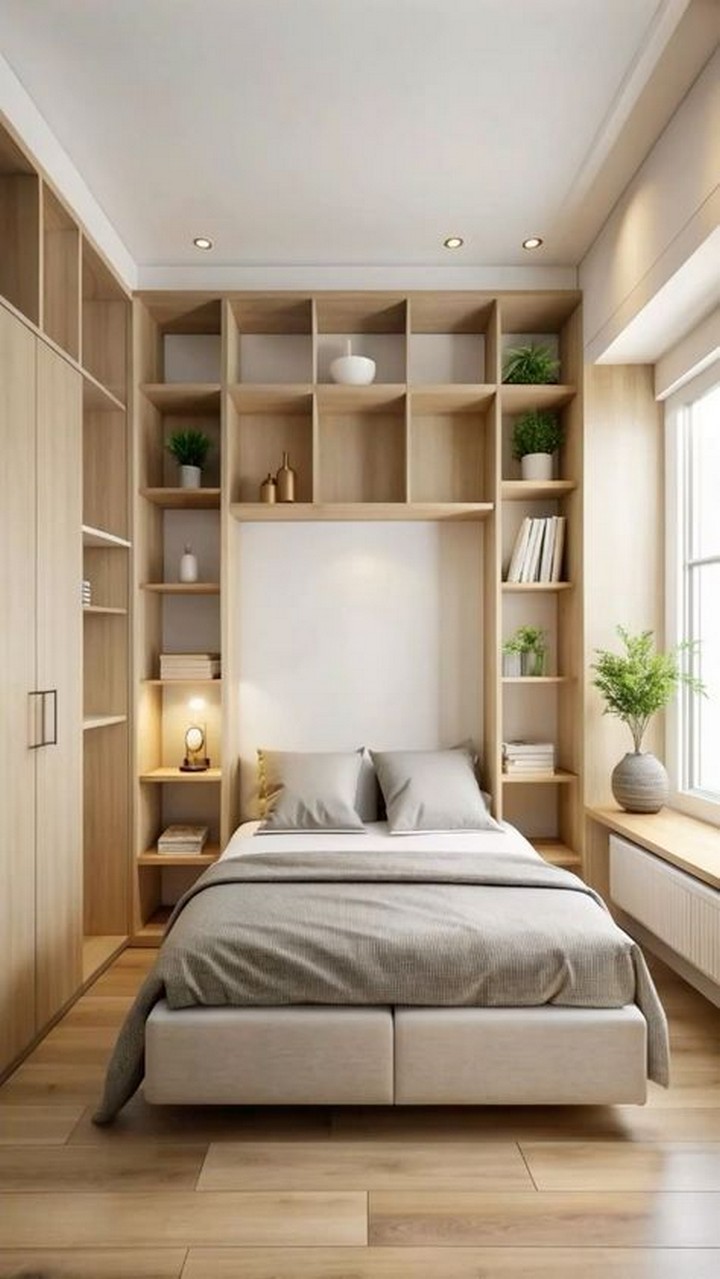
Textiles play a crucial role in Scandinavian comfort:
- Prioritize cotton, linen, and wool in bedding and curtains
- Look for undyed or naturally dyed options when possible
- Consider texture over pattern for visual interest
- Layer different weights for seasonal adaptability
Natural fibers add warmth and texture while connecting your space to the natural world—a core tenet of Scandinavian design.
16. Implement Thoughtful Layering

Strategic layering creates both visual interest and practical comfort:
- Start with simple white sheets as your foundation
- Add a medium-weight duvet in a neutral tone
- Layer a textured throw blanket at the foot of the bed
- Complete with 2-3 pillows in complementary textures
This approach adds dimension without overwhelming your small space with excessive textiles.
17. Consider Floor Textiles Carefully
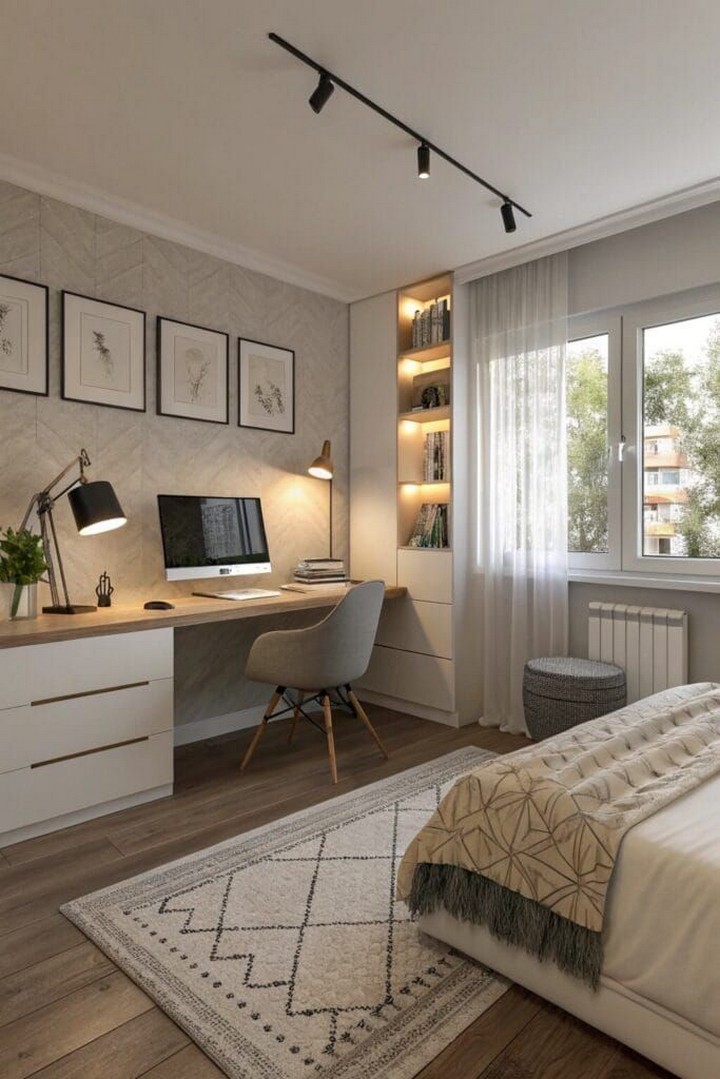
Rugs anchor your space while adding warmth:
- Choose natural fiber options like wool, jute, or cotton
- Consider light colors in small patterns or solids
- Properly size your rug—either substantially under the bed or a smaller option beside it
- Look for flat-weave options rather than high-pile varieties
The right floor covering adds warmth without visually lowering ceiling height—a key consideration in small bedrooms.
Mindful Accessorizing
18. Practice Intentional Minimalism
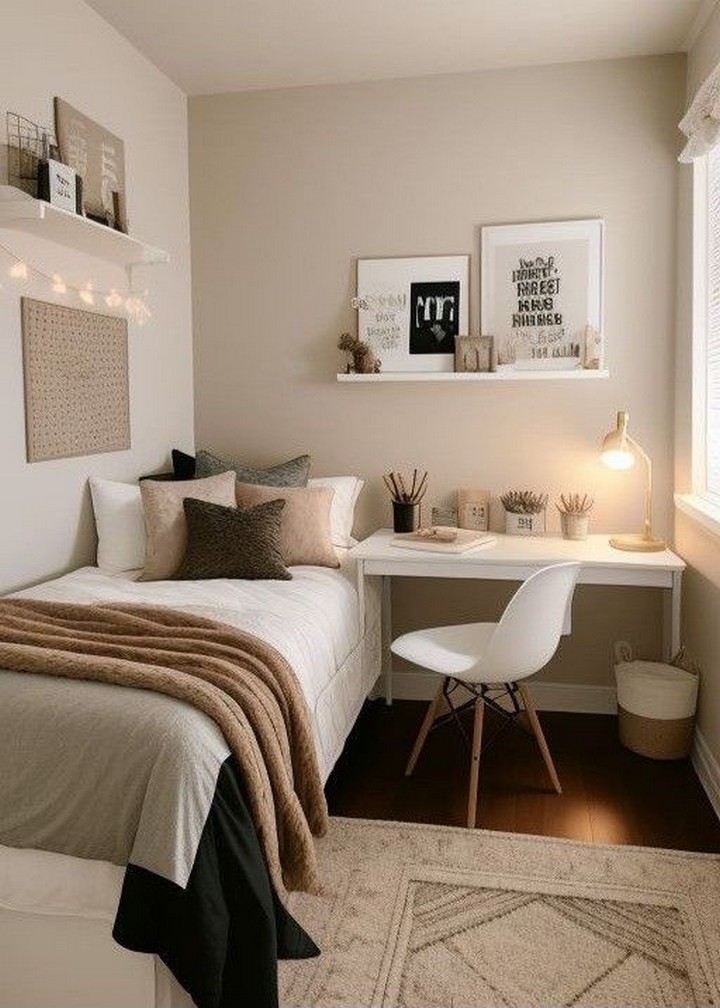
In Scandinavian design, less truly is more:
- Select just 3-5 decorative objects with personal significance
- Create negative space around displayed items
- Choose quality over quantity for lasting impact
- Regularly reassess and edit your accessories
This disciplined approach to accessorizing keeps small spaces from feeling cluttered while highlighting what truly matters.
19. Incorporate Botanical Elements
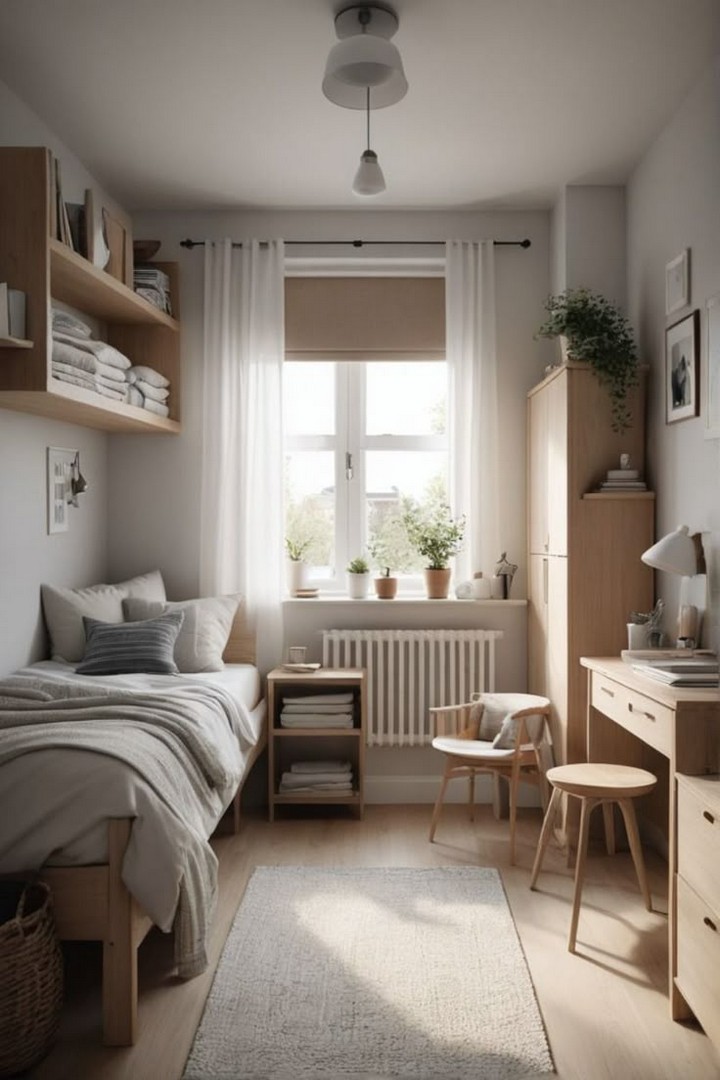
Plants are non-negotiable in Scandinavian interiors:
- Choose 1-2 statement plants for larger spaces (corners, floor)
- Add small potted herbs or succulents to shelving
- Consider wall-mounted planters to save surface space
- Select architectural plant varieties with strong forms
Living elements bring vitality to minimalist spaces while improving air quality—particularly valuable in small bedrooms.
20. Select Meaningful Artwork
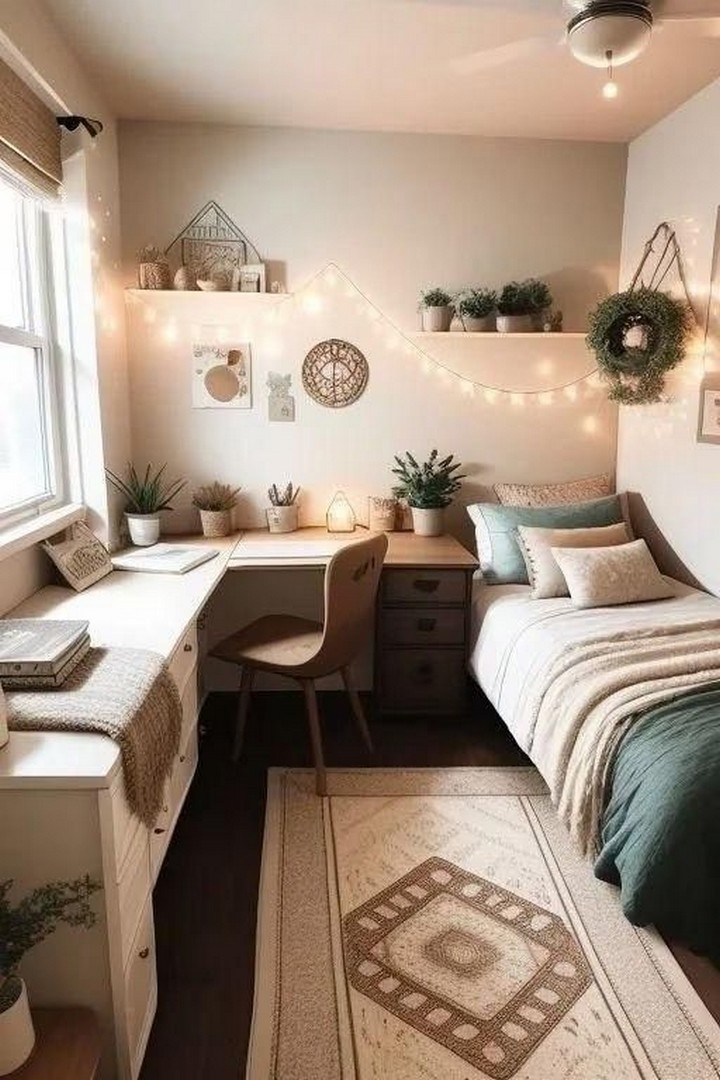
Art adds personality without requiring floor space:
- Choose one larger piece rather than multiple small ones
- Consider black and white photography for classic Scandinavian appeal
- Look for abstract pieces in your room’s color palette
- Mount art at eye level to draw the gaze upward
Thoughtfully selected artwork creates a focal point that distracts from a room’s modest dimensions.
Functional Layout Strategies
21. Create Zones Despite Size Limitations
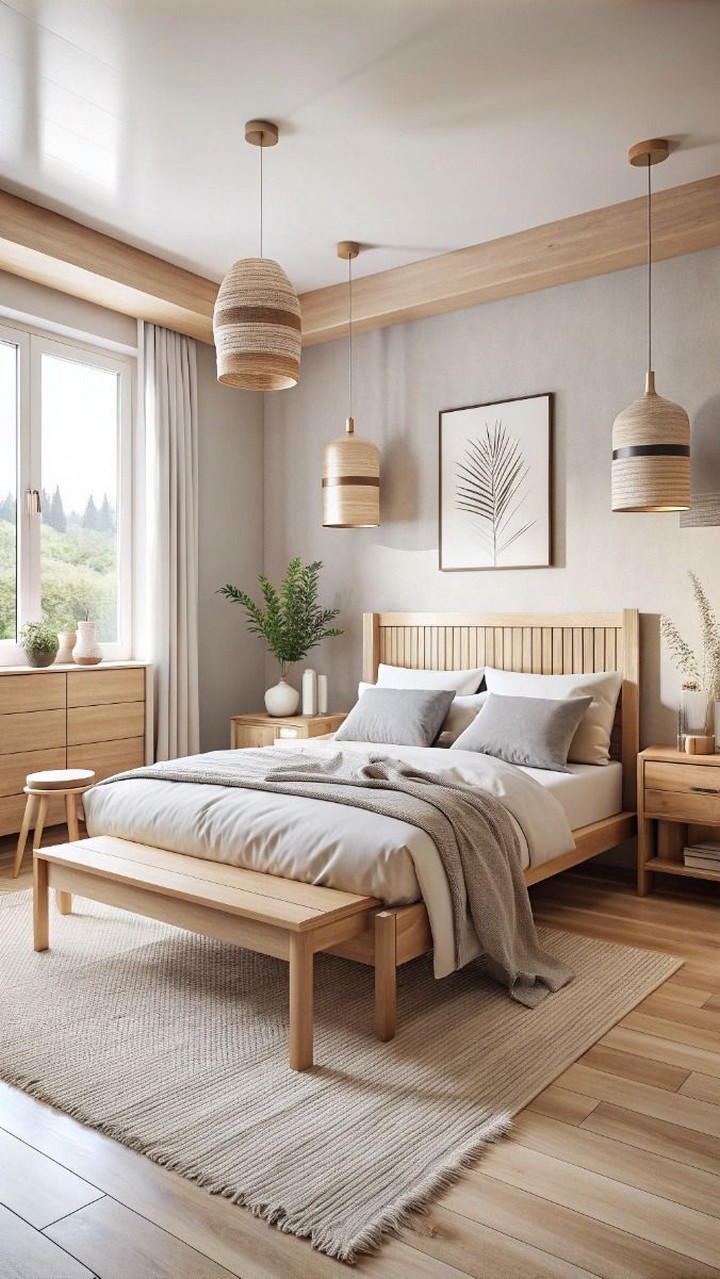
Even small bedrooms benefit from designated areas:
- Define a sleeping zone with rug placement and lighting
- Create a minimal dressing area with just the essentials
- Consider a compact reading nook in a corner
- Designate a meditation or yoga space if wellness is a priority
These subtle zone delineations enhance functionality without requiring additional square footage.
22. Maintain Circulation Pathways
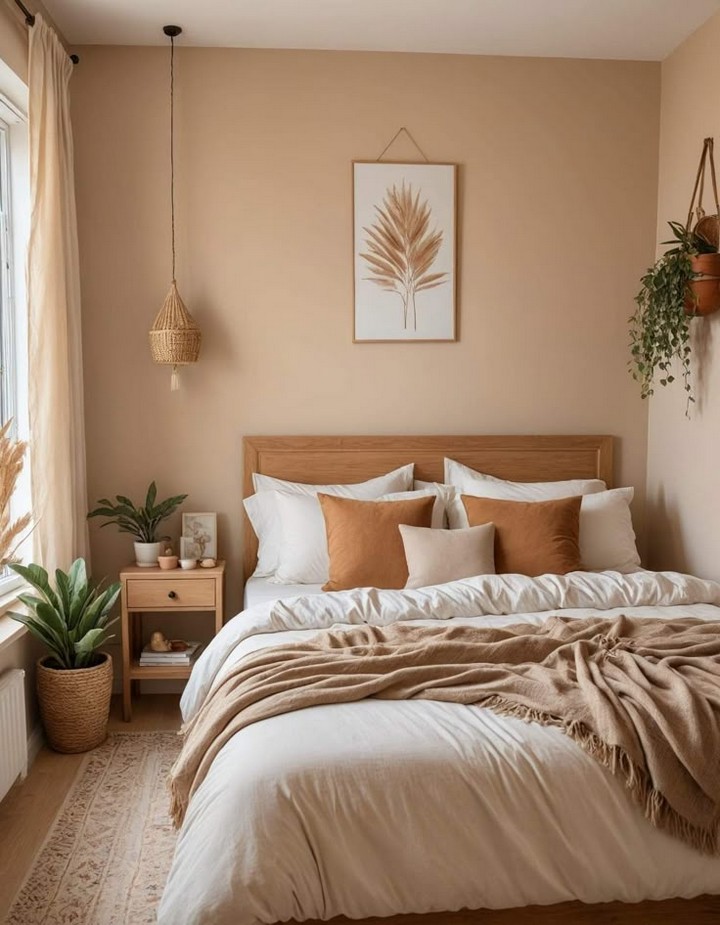
Movement flow significantly impacts perceived spaciousness:
- Ensure at least 24 inches of walking space around the bed
- Position furniture to create natural pathways
- Avoid diagonal furniture placement in most cases
- Consider sliding doors for closets and entrances
Well-planned circulation makes small rooms feel intentional rather than cramped.
23. Utilize Corners Effectively
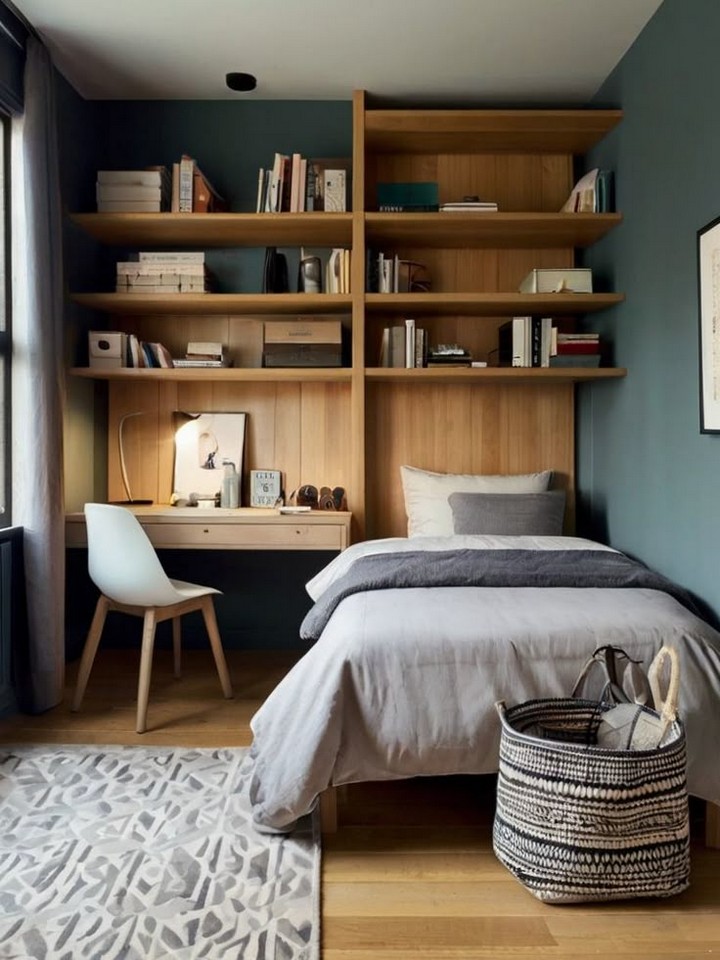
Corners often represent underutilized space:
- Consider corner shelving for display and storage
- Explore floating corner desks for compact work areas
- Position floor lamps in corners to distribute light while saving space
- Look for corner clothing racks for frequently worn items
Thoughtful corner utilization can add significant functional space without impacting your room’s flow.
Detail Refinements
24. Select Minimal Window Treatments
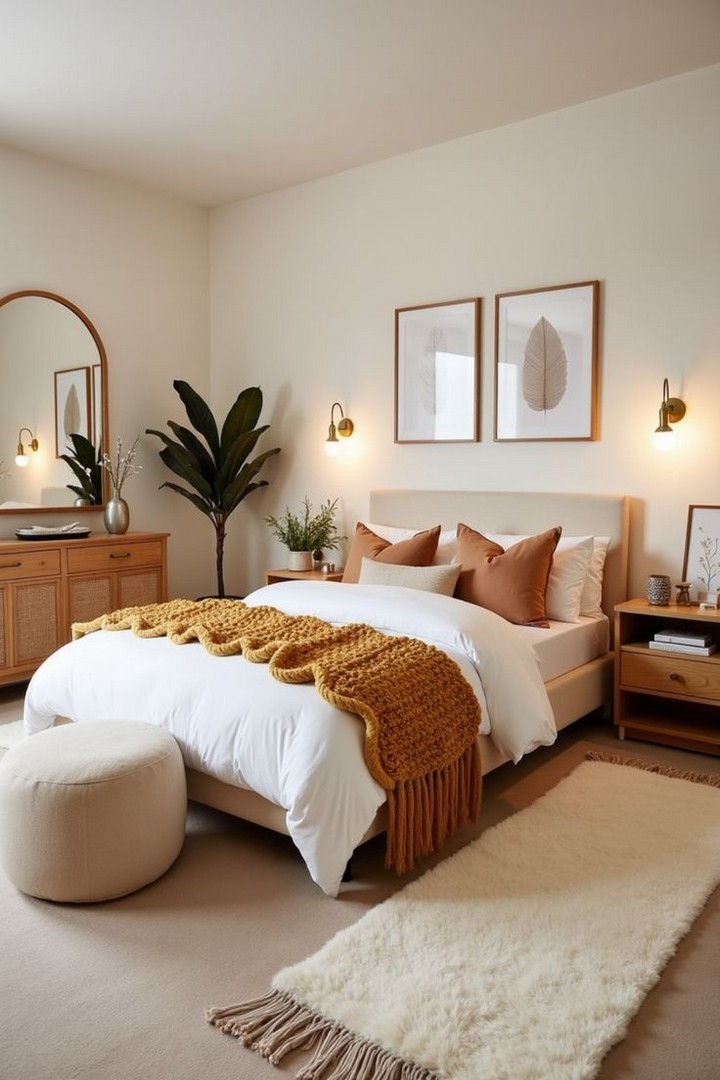
Window coverings impact both aesthetics and functionality:
- Choose simple roller blinds in neutral tones
- Consider unlined linen curtains for filtered light
- Mount curtain rods at ceiling height to enhance perceived height
- Select curtain colors that blend with wall tones for cohesion
The right window treatments enhance privacy while maintaining the light, airy quality essential to Scandinavian design.
25. Embrace Negative Space
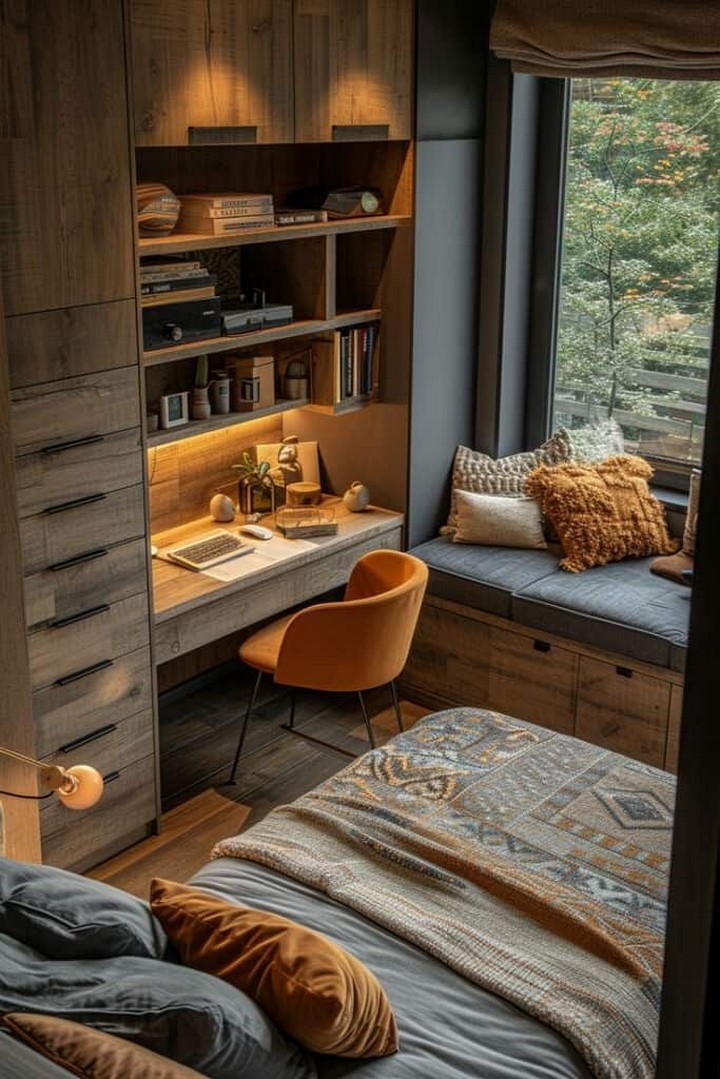
Perhaps the most crucial element of Scandinavian minimalism is what you don’t include:
- Allow walls to breathe with intentional empty areas
- Keep nightstands and surfaces partially clear
- Create visual breaks between furniture groupings
- Resist the urge to fill every shelf completely
This deliberate embrace of emptiness creates the psychological impression of spaciousness that defines successful small-space design.
Implementing These Ideas: A Practical Approach
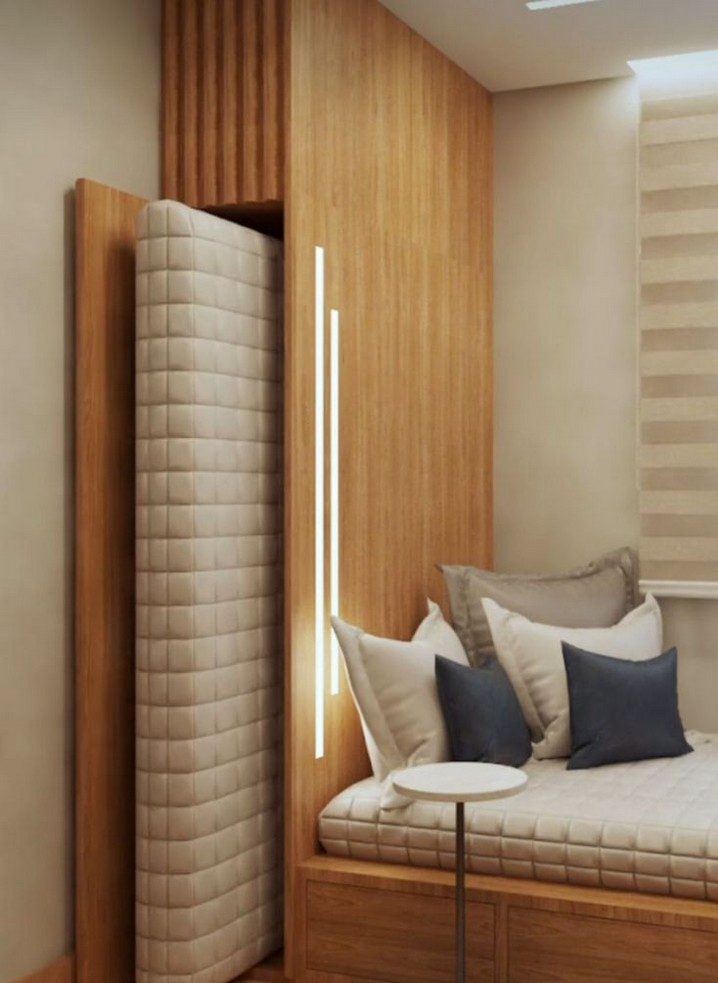
Transforming your small bedroom doesn’t require implementing all 25 ideas simultaneously. Begin with fundamentals:
- Start with the color palette white walls create an immediate impact
- Assess your existing furniture for scale appropriateness
- Declutter rigorously before adding anything new
- Address lighting improvements, particularly natural light maximization
- Add textiles and accessories only after establishing your foundation
This phased approach allows for budget management while creating immediate, noticeable improvements.
Sustainability Considerations
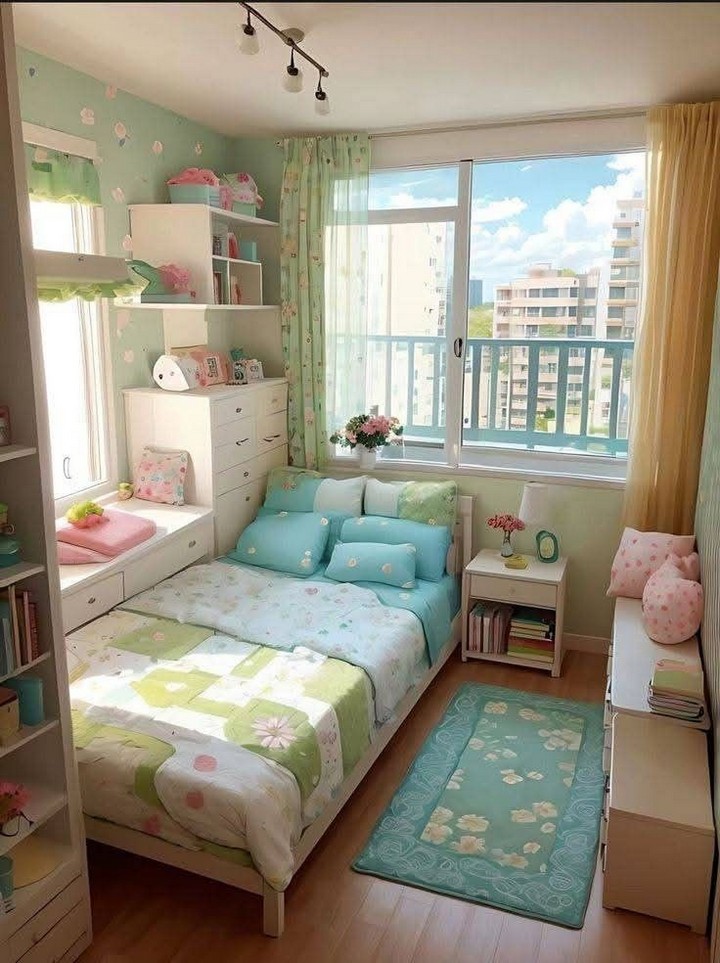
True Scandinavian design embraces environmental consciousness:
- Choose solid wood furniture that will last generations
- Select organic textiles when possible
- Consider vintage or secondhand options for character and sustainability
- Invest in quality pieces that won’t need frequent replacement
These choices align with both Scandinavian values and contemporary environmental concerns.
Beyond Aesthetics
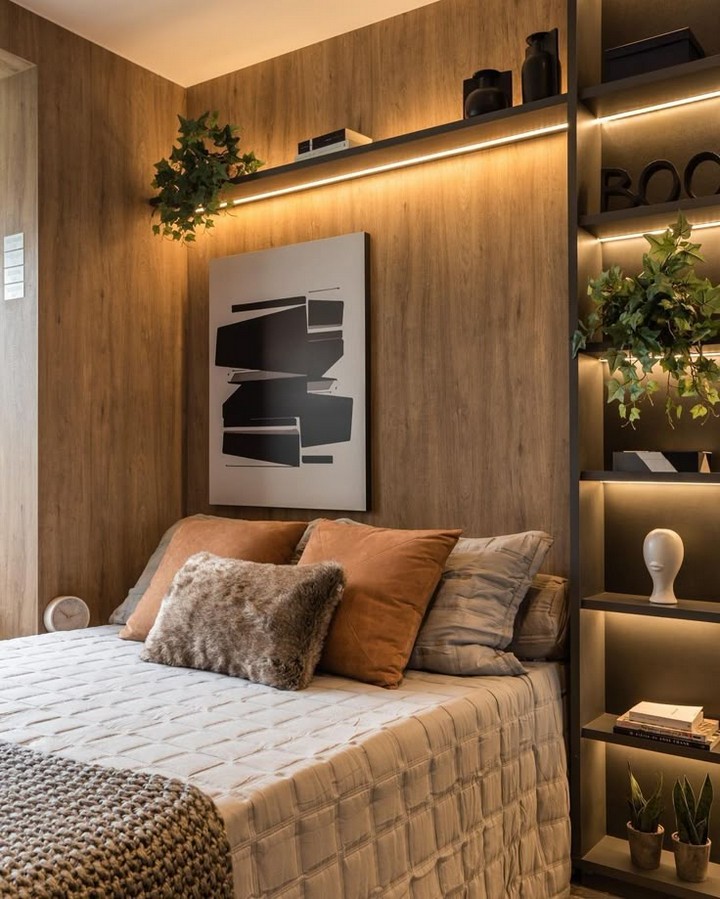
While Scandinavian minimalist bedrooms undeniably photograph beautifully for social media, their true value lies in the lifestyle they facilitate. These spaces encourage mindfulness, quality rest, and a connection to simplicity that transcends mere design trends.
For small bedroom spaces particularly, this approach transforms potential constraints into opportunities creating rooms that feel expansive, calming, and intentional despite their modest dimensions. The principles of functionality, light, and thoughtful curation create environments that serve both practical needs and emotional wellbeing.
The beauty of Scandinavian minimalism for small spaces ultimately lies in its accessibility these principles can be applied at virtually any budget level, from complete renovations to simple weekend refreshes. By focusing on what truly matters and eliminating the unnecessary, your small bedroom can become a sanctuary of Scandinavian-inspired calm.
Which of these Scandinavian minimalist ideas resonates most with your space and lifestyle? We’d love to see your transformations and hear about your experiences implementing these concepts. Share your before-and-after photos, challenges, or questions in the comments below!
For more inspiration on small-space living, sustainable design choices, or specific Scandinavian styling techniques, explore our related articles. And remember in the world of minimalist design, less truly can be more, especially when every element is chosen with intention and purpose.


